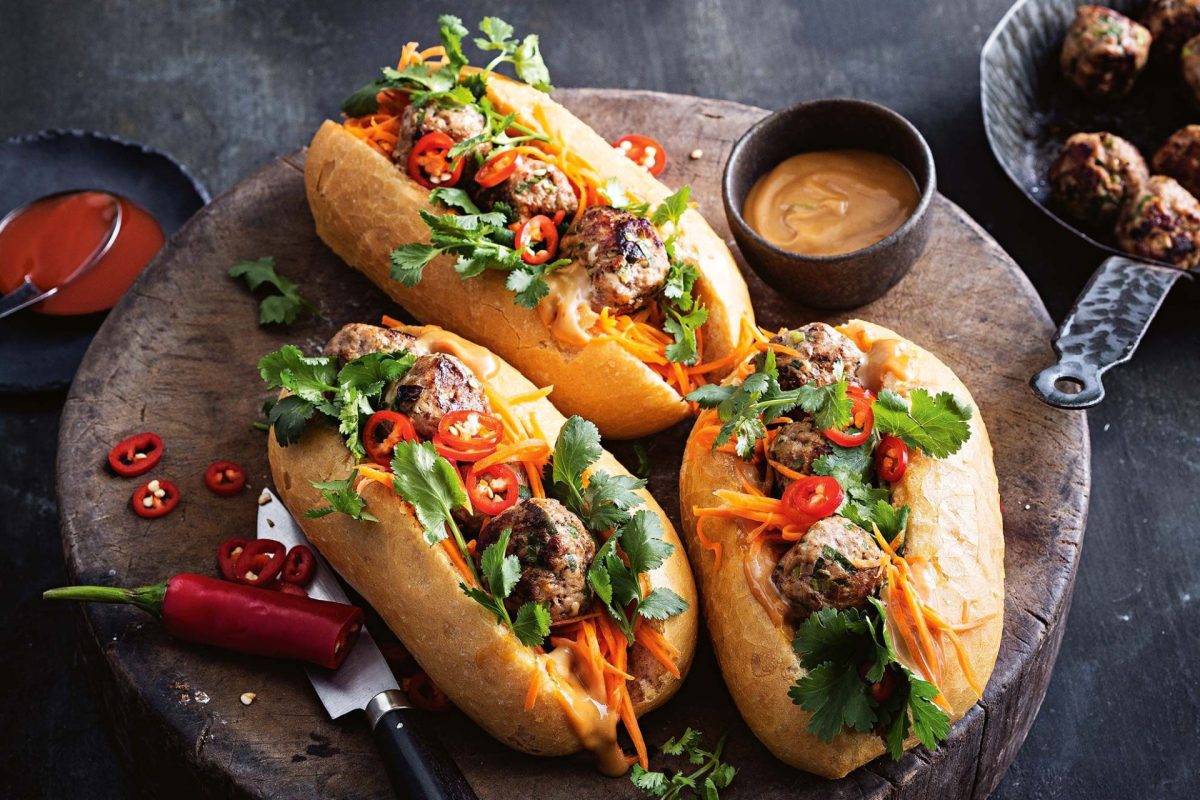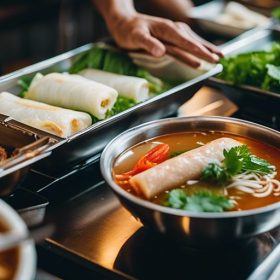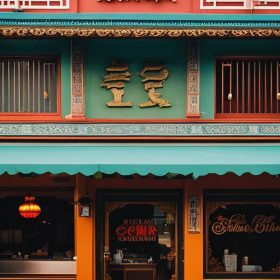Vietnamese cuisine is known for its bold and vibrant flavors, and one of the key elements that contribute to this is the use of spices. Spices play a crucial role in Vietnamese cooking, adding depth, complexity, and a touch of heat to dishes. From the fiery chili peppers to the aromatic lemongrass and pungent fish sauce, Vietnamese cuisine is a gastronomic adventure that will tantalize your taste buds.
When it comes to spiciness, Vietnamese dishes can range from mild to fiery. The level of spiciness can vary depending on the region and personal preference. Some dishes are known for their intense heat, while others offer a more subtle kick. Whether you’re a spice lover or someone who prefers milder flavors, there is something for everyone in Vietnamese cuisine.
A Brief History of Spices in Vietnamese Cuisine
Spices have been an integral part of Vietnamese cuisine for centuries. The use of spices in Vietnam can be traced back to its early history, when traders from neighboring countries brought exotic spices to the region. Over time, these spices became an essential part of Vietnamese cooking, adding depth and flavor to dishes.
The influence of neighboring countries such as China and India also played a significant role in shaping Vietnamese cuisine and its use of spices. Chinese traders introduced ingredients like star anise, cinnamon, and ginger, which are commonly used in Vietnamese dishes today. Indian traders brought spices like turmeric and cumin, which are often used in curries and stews.
The Top Spices Used in Vietnamese Cooking: An Overview
There are several spices that are commonly used in Vietnamese cuisine. These spices add flavor, aroma, and heat to dishes, creating a unique culinary experience. Here are some of the top spices used in Vietnamese cooking:
1. Chili Peppers: Chili peppers are a staple in Vietnamese cuisine and are used to add heat to dishes. They come in various forms, including fresh, dried, and powdered. The level of spiciness can vary depending on the type of chili pepper used.
2. Lemongrass: Lemongrass is a fragrant herb that is commonly used in Vietnamese cooking. It has a citrusy flavor and adds a refreshing aroma to dishes. Lemongrass is often used in soups, stir-fries, and marinades.
3. Fish Sauce: Fish sauce is a pungent condiment made from fermented fish. It is a key ingredient in Vietnamese cuisine and adds a savory umami flavor to dishes. Fish sauce is used in marinades, dipping sauces, and as a seasoning in soups and stir-fries.
4. Ginger: Ginger is widely used in Vietnamese cooking for its aromatic and spicy flavor. It adds warmth and depth to dishes and is often used in soups, stir-fries, and marinades.
5. Turmeric: Turmeric is a vibrant yellow spice that is commonly used in Vietnamese curries and stews. It has a slightly bitter flavor and adds color to dishes.
How Spices are Used in Vietnamese Dishes: Techniques and Methods
Spices are used in various ways in Vietnamese cooking, depending on the dish and the desired flavor profile. Here are some of the techniques and methods used to incorporate spices in Vietnamese dishes:
1. Stir-frying: Stir-frying is a common cooking technique in Vietnamese cuisine, and spices are often added during this process. The spices are usually added at the beginning of the stir-fry to infuse the oil with their flavors.
2. Marinating: Marinating is another popular technique used to incorporate spices into Vietnamese dishes. The spices are mixed with other ingredients like fish sauce, garlic, and sugar to create a flavorful marinade for meats or vegetables.
3. Boiling: Boiling is a common cooking method used in Vietnamese soups and stews. Spices are often added to the broth to infuse it with their flavors. This allows the spices to meld with the other ingredients and create a rich and aromatic broth.
4. Grinding: Some spices, like chili peppers and lemongrass, are often ground into a paste or powder before being used in Vietnamese dishes. This helps to release their flavors and distribute them evenly throughout the dish.
The Different Levels of Spiciness in Vietnamese Cuisine: Mild to Fiery
Vietnamese cuisine offers a range of spiciness levels, from mild to fiery. The level of spiciness can vary depending on the dish and the region. Here are the different levels of spiciness in Vietnamese cuisine:
1. Mild: Mildly spicy dishes are perfect for those who prefer a subtle kick of heat. These dishes usually have a hint of spiciness that adds flavor without overwhelming the palate. Examples of mildly spicy dishes include banh mi sandwiches, spring rolls, and pho.
2. Medium: Medium-spicy dishes offer a bit more heat, but still maintain a balance of flavors. These dishes have a noticeable kick of spiciness that adds depth and complexity to the dish. Examples of medium-spicy dishes include bun bo Hue (spicy beef noodle soup), bun cha (grilled pork with noodles), and bun rieu (crab noodle soup).
3. Fiery: Fiery dishes are for those who love intense heat and can handle the spice. These dishes pack a punch and are not for the faint of heart. Examples of fiery dishes include bun bo Hue (spicy beef noodle soup), bun bo Nam Bo (spicy beef salad), and bun dau mam tom (fried tofu with shrimp paste).
Regional Variations in Spicy Vietnamese Dishes: North, Central, and South
Vietnam is a diverse country with distinct regional cuisines, and this is reflected in the spicy dishes found in each region. Here are some examples of spicy dishes that are unique to each region:
1. North: In the northern region of Vietnam, the cuisine is known for its subtle flavors and delicate balance of spices. One popular spicy dish from this region is bun cha Hanoi, which consists of grilled pork served with rice noodles and a spicy dipping sauce. Another dish is cha ca La Vong, which is turmeric-marinated fish served with herbs and rice noodles.
2. Central: The central region of Vietnam is known for its bold and spicy flavors. One iconic dish from this region is bun bo Hue, a spicy beef noodle soup that features tender beef, pork hock, and pig’s blood cubes. Another dish is mi quang, which is a spicy noodle dish topped with shrimp, pork, and various herbs.
3. South: The southern region of Vietnam is known for its vibrant and flavorful cuisine. One popular spicy dish from this region is banh xeo, which is a crispy pancake filled with shrimp, pork, bean sprouts, and herbs. Another dish is hu tieu Nam Vang, which is a spicy noodle soup topped with pork, shrimp, and quail eggs.
Must-Try Spicy Vietnamese Dishes: From Street Food to Fine Dining
Vietnamese cuisine offers a wide range of spicy dishes that are a must-try for any food lover. From street food to fine dining, here are some popular spicy Vietnamese dishes that you should try:
1. Pho: Pho is one of Vietnam’s most famous dishes and can be found on almost every street corner. This flavorful noodle soup is made with beef or chicken broth and topped with thinly sliced meat, herbs, and chili peppers.
2. Bun bo Hue: Bun bo Hue is a spicy beef noodle soup that originated in the central region of Vietnam. It features tender beef, pork hock, and pig’s blood cubes, and is flavored with lemongrass, shrimp paste, and chili oil.
3. Banh mi: Banh mi is a Vietnamese sandwich that is filled with various ingredients like grilled meats, pickled vegetables, and chili peppers. The combination of flavors and textures makes it a delicious and spicy street food option.
4. Bun cha: Bun cha is a popular dish in Hanoi that consists of grilled pork served with rice noodles, herbs, and a spicy dipping sauce. The smoky flavors of the grilled pork combined with the spicy sauce make it a flavorful and satisfying dish.
5. Com tam: Com tam is a Vietnamese broken rice dish that is often served with grilled meats, pickled vegetables, and a spicy fish sauce dressing. The combination of flavors and textures makes it a delicious and spicy meal option.
Pairing Spicy Vietnamese Dishes with Local Beers and Wines
When it comes to pairing spicy Vietnamese dishes with beverages, local beers and wines are the perfect choices. Here are some recommendations for pairing spicy Vietnamese dishes with local beers and wines:
1. Beer: Vietnamese beer is light and refreshing, making it an ideal choice to pair with spicy dishes. Some popular local beers include Saigon Beer, Bia Hanoi, and 333 Beer. These beers have a crisp and clean flavor that helps to cool down the palate after eating spicy food.
2. Wine: Vietnamese wine is gaining recognition for its quality and unique flavors. White wines like Vang Dalat (Dalat wine) or Vang Da Lat (Da Lat wine) pair well with spicy seafood dishes, while red wines like Vang Ninh Thuan (Ninh Thuan wine) or Vang Phu Quoc (Phu Quoc wine) complement spicy meat dishes.
Tips for Handling Spicy Food: How to Cool Down Your Palate
If you’re not accustomed to spicy food, it’s important to know how to cool down your palate. Here are some tips for handling spicy food:
1. Drink milk or eat yogurt: Dairy products like milk and yogurt can help to neutralize the heat from spicy food. The proteins in dairy products bind to the capsaicin, the compound responsible for the spiciness, and help to alleviate the burning sensation.
2. Eat something sweet: Eating something sweet can help to counterbalance the spiciness of a dish. Sugar helps to soothe the taste buds and provide relief from the heat.
3. Drink water or eat bread: Drinking water or eating bread can help to dilute the spiciness and provide temporary relief. However, be aware that water can spread the capsaicin around your mouth, so it’s best to pair it with something that can absorb the heat, like bread.
4. Take small bites and pace yourself: If you’re not used to spicy food, it’s best to take small bites and pace yourself. This will give your taste buds time to adjust to the heat and prevent overwhelming your palate.
Exploring Vietnam’s Spice Markets: Where to Find the Best Spices
If you’re interested in exploring Vietnam’s spice markets, there are several places where you can find the best spices. Here are some of the best spice markets in Vietnam:
1. Ben Thanh Market (Ho Chi Minh City): Ben Thanh Market is one of the oldest and most famous markets in Ho Chi Minh City. It offers a wide variety of spices, herbs, and other ingredients used in Vietnamese cooking.
2. Dong Xuan Market (Hanoi): Dong Xuan Market is the largest covered market in Hanoi and is a great place to find spices and other ingredients. The market is bustling with activity and offers a wide range of products at affordable prices.
3. Hoi An Central Market (Hoi An): Hoi An Central Market is a vibrant and colorful market that is known for its fresh produce, spices, and local specialties. It’s a great place to immerse yourself in the local culture and find high-quality spices.
4. Da Lat Market (Da Lat): Da Lat Market is a popular market in the highlands of Vietnam and is known for its fresh produce, flowers, and spices. The market offers a wide variety of spices, including cinnamon, star anise, and cardamom.
Bringing the Heat Home: Recipes for Spicy Vietnamese Dishes You Can Make at Home
If you want to bring the heat of Vietnamese cuisine into your own kitchen, here are some recipes for spicy Vietnamese dishes that you can make at home:
1. Spicy Beef Noodle Soup (Bun Bo Hue):
Ingredients:
– 1 lb beef shank
– 1 lb pork hock
– 1 lb pig’s blood cubes (optional)
– 2 lemongrass stalks, bruised
– 2 tbsp shrimp paste
– 2 tbsp chili oil
– 1 tbsp fish sauce
– 1 tbsp sugar
– Rice noodles
– Bean sprouts
– Lime wedges
– Fresh herbs (Thai basil, cilantro, mint)
Instructions:
1. In a large pot, bring water to a boil and add the beef shank and pork hock. Cook for about 2 hours until the meat is tender.
2. Remove the meat from the pot and let it cool. Slice the beef shank into thin slices and shred the pork hock.
3. In a small bowl, mix together the shrimp paste, chili oil, fish sauce, and sugar.
4. Bring the broth back to a boil and add the lemongrass stalks and the shrimp paste mixture. Simmer for about 30 minutes to allow the flavors to meld.
5. Cook the rice noodles according to the package instructions.
6. To serve, divide the rice noodles among bowls and top with the sliced beef shank, shredded pork hock, pig’s blood cubes (if using), bean sprouts, and fresh herbs. Ladle the hot broth over the top and serve with lime wedges.
2. Spicy Grilled Pork (Bun Cha):
Ingredients:
– 1 lb pork shoulder, thinly sliced
– 3 cloves garlic, minced
– 2 tbsp fish sauce
– 2 tbsp sugar
– 1 tbsp vegetable oil
– 1 tbsp chili flakes
– Rice noodles
– Lettuce leaves
– Fresh herbs (mint, cilantro)
– Pickled vegetables (carrots, daikon)
Instructions:
1. In a bowl, mix together the minced garlic, fish sauce, sugar, vegetable oil, and chili flakes.
2. Add the sliced pork shoulder to the marinade and let it marinate for at least 30 minutes.
3. Preheat a grill or grill pan over medium-high heat. Grill the marinated pork slices for about 2-3 minutes on each side until cooked through and slightly charred.
4. Cook the rice noodles according to the package instructions.
5. To serve, divide the rice noodles among bowls and top with the grilled pork and any desired toppings such as fresh herbs, sliced cucumbers, and bean sprouts. Drizzle with a generous amount of the prepared sauce and garnish with crushed peanuts for added crunch. Serve immediately and enjoy!

Cuong Nguyen is a talented writer and experienced waitress at Vietnampalace.net, a renowned Vietnamese restaurant that offers an extensive menu of authentic Vietnamese cuisine. With a background in the competition of Vietnamese cuisine, Cuong brings a wealth of knowledge and expertise to the dining experience. From delicious pho dishes to fresh spring rolls, Cuong ensures that every meal is made with the freshest ingredients and authentic flavors.With exceptional service and a friendly atmosphere, Cuong takes pride in providing a memorable dining experience for every customer.
Whether you’re a vegetarian looking for options or a meat lover craving the flavors of traditional Vietnamese dishes, Cuong guarantees a delightful culinary adventure. So, visit Vietnampalace.net and let Cuong guide you through the tantalizing world of Vietnamese cuisine.



